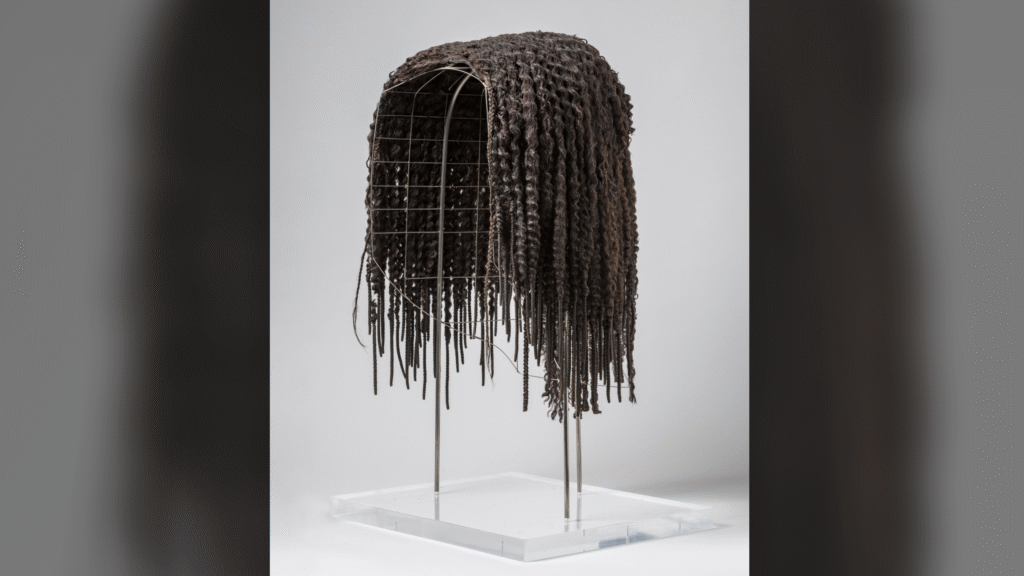simple facts
Name: Merit wig
Contents: A wig made of human hair.
Origin: Luxor, Egypt
Creation date: c.1425 to c.1353 B.C.
In 1906, archaeologists discovered the wig of an Egyptian woman known as Merritt when excavating the tomb she shared with her husband Ka in Luxor (known in ancient times as Thebes). Archaeologist Ernesto Schiaparelli wrote that the wig was made of dark brown human hair and still shone with perfumed oil applied more than 3,000 years before it was discovered.
Schiaparelli discovered the wig inside a tall acacia box with Merritt’s name engraved on it. Inside the box were two wooden, linen-covered stands that supported the wigs. The richly decorated tomb contained the bejeweled mummies of both Ka (the architect of New Kingdom pharaoh Amenhotep II) and Merritt, as well as her stocked cosmetic case and a basket containing her hairpins, razor, and wooden comb. Most of the more than 500 artifacts excavated from the tombs of Ka and Merritt are in the collections of the Egyptian Museum in Turin, Italy.
Merritt wore a center-parted crimp wig over her own shaved or close-cropped hair. The small waves were probably created by braiding the hair when it was wet and removing the braids when dry.
you may like
According to the Egyptian Museum, “This type of hairstyle, often decorated with flowers or crowns, was very fashionable in the mid-18th Dynasty, as can be seen in paintings and statues of the time.”
Wigs were commonly worn by elite men and women in ancient Egypt. They allowed people to have elaborate hairstyles, but at the same time protected them from direct sunlight and head lice. Some people shave their heads completely before wearing a wig, while others have their natural hair cropped short under the wig.
In a 2016 study of Merritt’s wig, researchers used gas chromatography-mass spectrometry, an analytical method that identifies and measures compounds in a sample, to uncover more details about Merritt’s original hairstyle and grooming. They found traces of vegetable oil in the hair. This may have been used, like hair gel in ancient times, to keep hair smooth and in good condition. Traces of cholesterol, a compound found in the human scalp, were also found on one of the combs, suggesting that Merritt had used the comb during his lifetime.
More amazing artifacts
Based on this analysis, the researchers concluded that Merritt “combed his own hair flat by smoothing it by applying a mixture of vegetable oil, vegetable gum, balsam, and beeswax, which were also found between the teeth of the comb.”
Egyptologist Joanne Fletcher said numerous wigs and hair extensions have been preserved from ancient Egypt, with the earliest known examples dating back to 3400 BC. Fletcher says there’s still a lot to learn from preserved wigs like Merritt’s, as the topic of Egyptian hairstyles has grown in popularity in recent decades.
For more amazing archaeological discoveries, check out our Astonishing Artifacts archive.
Source link

